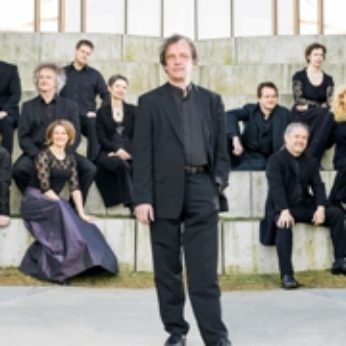Composer: Antonio Vivaldi (b. 1678 - d. 1741)
Performance date: 03/07/2014
Venue: St. Brendan’s Church
Composition Year: ca.1725
Duration: 00:07:34
Recording Engineer: Anton Timoney, RTÉ lyric fm
Instrumentation Category:Small Mixed Ensemble
Instrumentation Other: rec, 3vn, va, vc, db, lu, hpd
Artists:
Concerto Copenhagen (Peter Spissky, Fredrik From, Antina Hugosson [violins], Torbjörn Köhl [viola], Kate Hearne [cello], Mattias Frostenson [bass], Fredrik Bock [archlute, guitar], Lars-Ulrik Mortensen [harpsichord, director]) -
[baroque ensemble]

Vivaldi’s recorder concertos hold a very
dear place in the hearts of us recorder players. It is clear that his early flautino concertos and some of the later
works written for the instrument are aimed towards a specific player of high
virtuosic merit, while RV 442 falls into an intervening period when Vivaldi
only had a player of modest capabilities at hand. That said, the beauty and
atmospheric content of this work are magnificent, and its non-virtuosic nature
could be put down to the fact that it is an operatic concerto, all of its
content having come from, or being used later by Vivaldi in operatic arias.
Vivaldi reworked the concerto for transverse flute and published it in
Op.10 in 1728, but the recorder version, which exists only in manuscript form,
came first, and can be dated to around 1725.
The first movement takes the form of a
gentle pastorale, and is largely
based on the aria Ti sento, sì, ti sento
from La Costanza [1716]. He reuses this
material over and over again later, both in operatic and other chamber works.
The haunting siciliana, with its
sparse, melancholic accompaniment bears testament to Vivaldi’s abilities as a
melody writer, and appears in his 1724 opera, Il Tigrane. The concerto ends with a rustic, lively allegro, material from which is used in
no less than three of Vivaldi’s later operatic works. Vivaldi often depicts
idealised pastoral realms through the use of the recorder, and he reinforces
this in RV 442 by instructing the strings to play con sordini, or muted, throughout. Vivaldi’s decision to include
material from some of his best loved arias and theatrical works must have given
a greatest hits feeling to his Venetian fans in the 18th century, but it is no
less endearing today.
Copyright © 2025 West Cork Music. All rights reserved.
Designed and developed by Matrix Internet